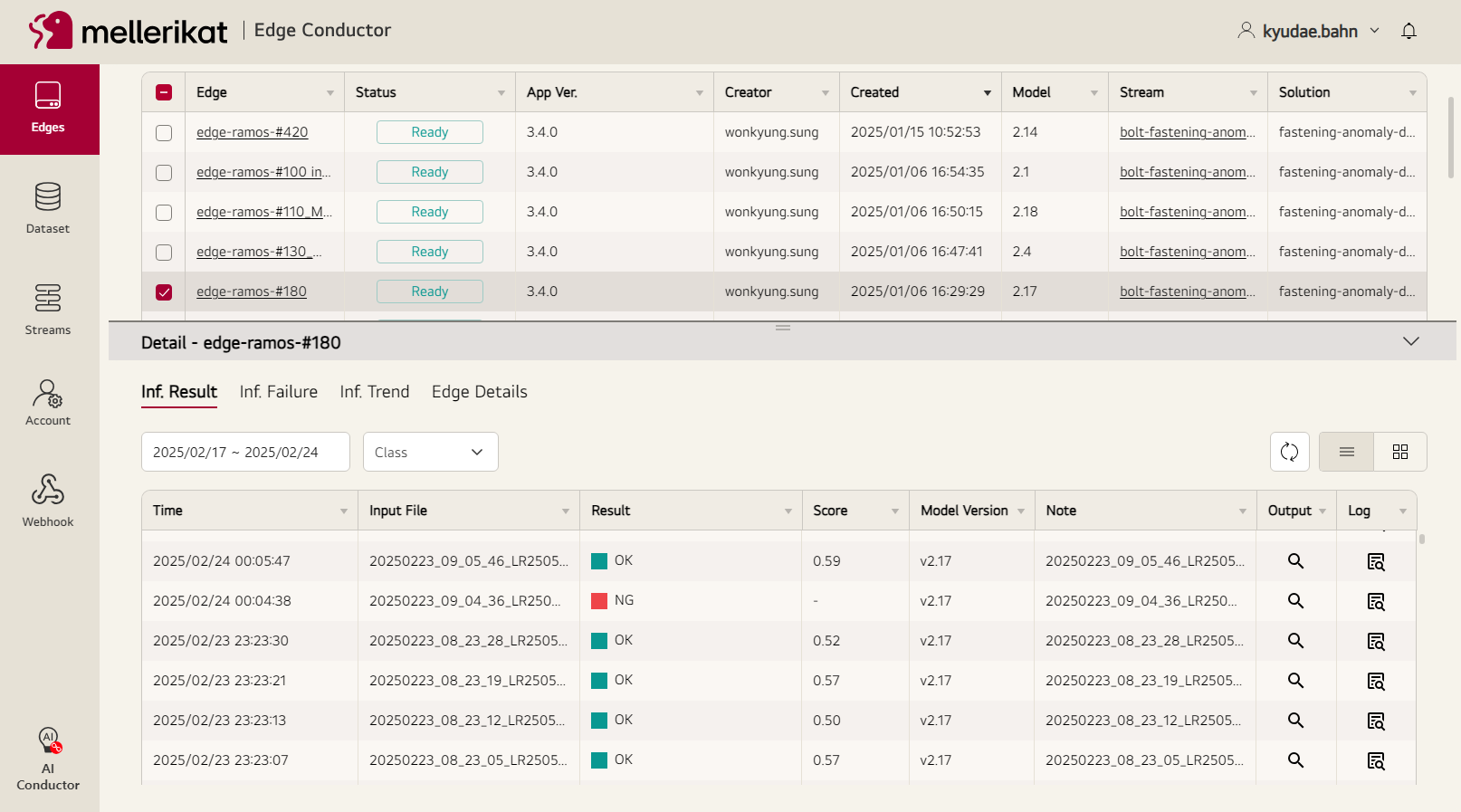Edges
An Edge refers to an entity that performs inference at the user's or data source's location. The Edge App for performing inference can be installed not only on On-Premise Devices, such as the Splunk Edge Hub but also on cloud resources (e.g., EC2). Multiple Edges can be registered in the Edge Conductor, allowing users to control and monitor the status of the Edges through the Edge Conductor.

Independence
Each Edge operates independently. Users can deploy different AI Solutions and models to each Edge, meaning a single Edge Conductor can utilize various solutions and models. Each Edge has a lifecycle of registration, inference preparation, inference, and deletion, which is managed by the Edge Conductor.
Security
When communicating between Edge Conductor and Edges, the serial number assigned to each Edge is encrypted and used as a communication key. If there are untrusted Edge requests, they are ignored to prevent the introduction of incorrect data and to protect the information within the Edge Conductor.
Connection Persistence
Edge Conductor uses the serial number rather than the IP address to identify each Edge. This ensures that as long as the serial number of the Edge remains unchanged (even if the IP address changes), the existing data and status are maintained. Users do not need to perform additional setup work when relocating the network position of an Edge Device.
Monitoring
Monitoring the inference status of Edges is one of the core features of the Edge Conductor. Users can monitor whether the model is operating normally and maintaining high accuracy through the collected inference results. Users receive alerts if inference performance drops and can check inference data to determine if a model update is needed. The inference results collected from the Edge can be used to create datasets for model training. Users can analyze the cause by checking the history and logs through Inference Failure.
Search
Depending on how users utilize the system, numerous Edges, Datasets, and Streams can be created. To easily search and dynamically group many items, Key-Value-based Tagging attributes are used. For example, when registering Edges, users can register a tag value as 'department:DX Engineering Team' and search the main screen for Key:department - Value:DX Engineering Team to view only the Edges registered by the DX Engineering Team. Multiple tags can be registered.
Topics